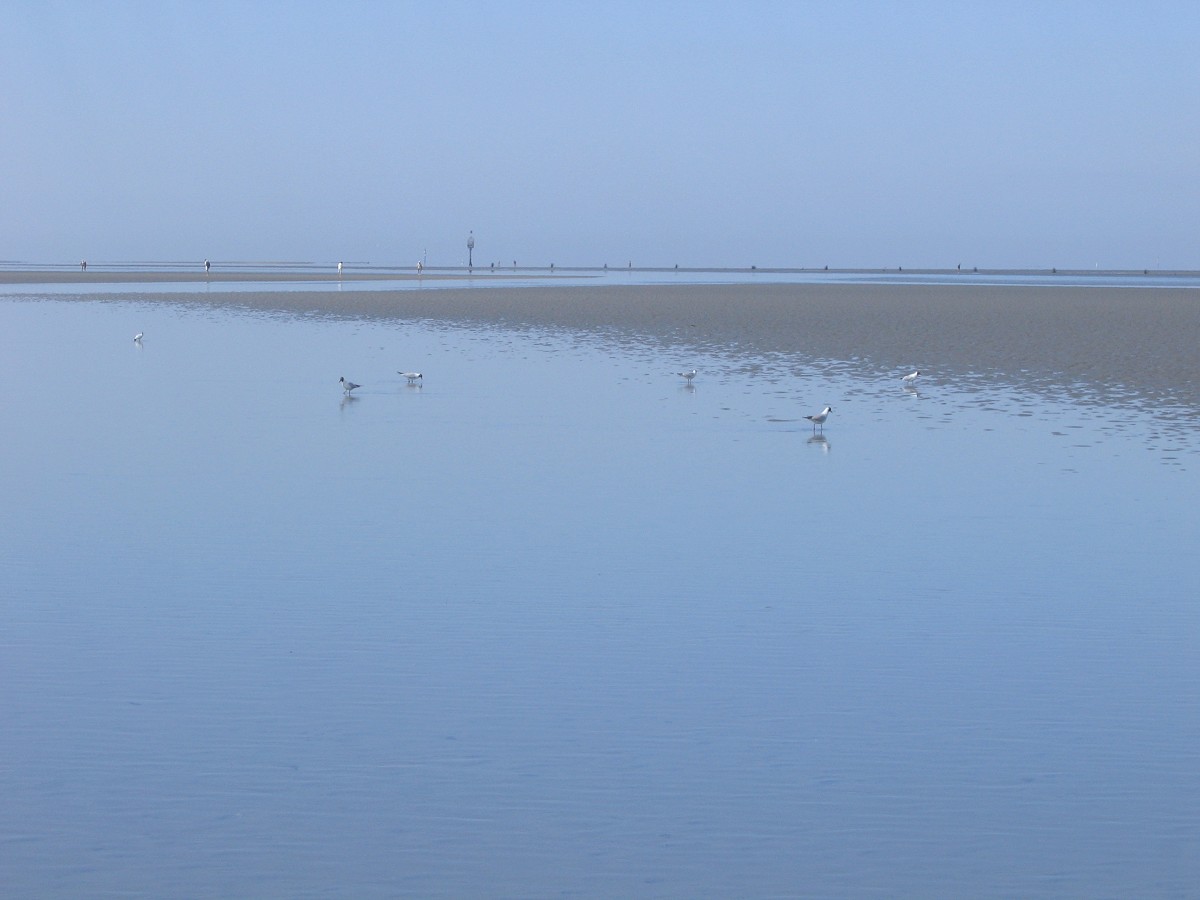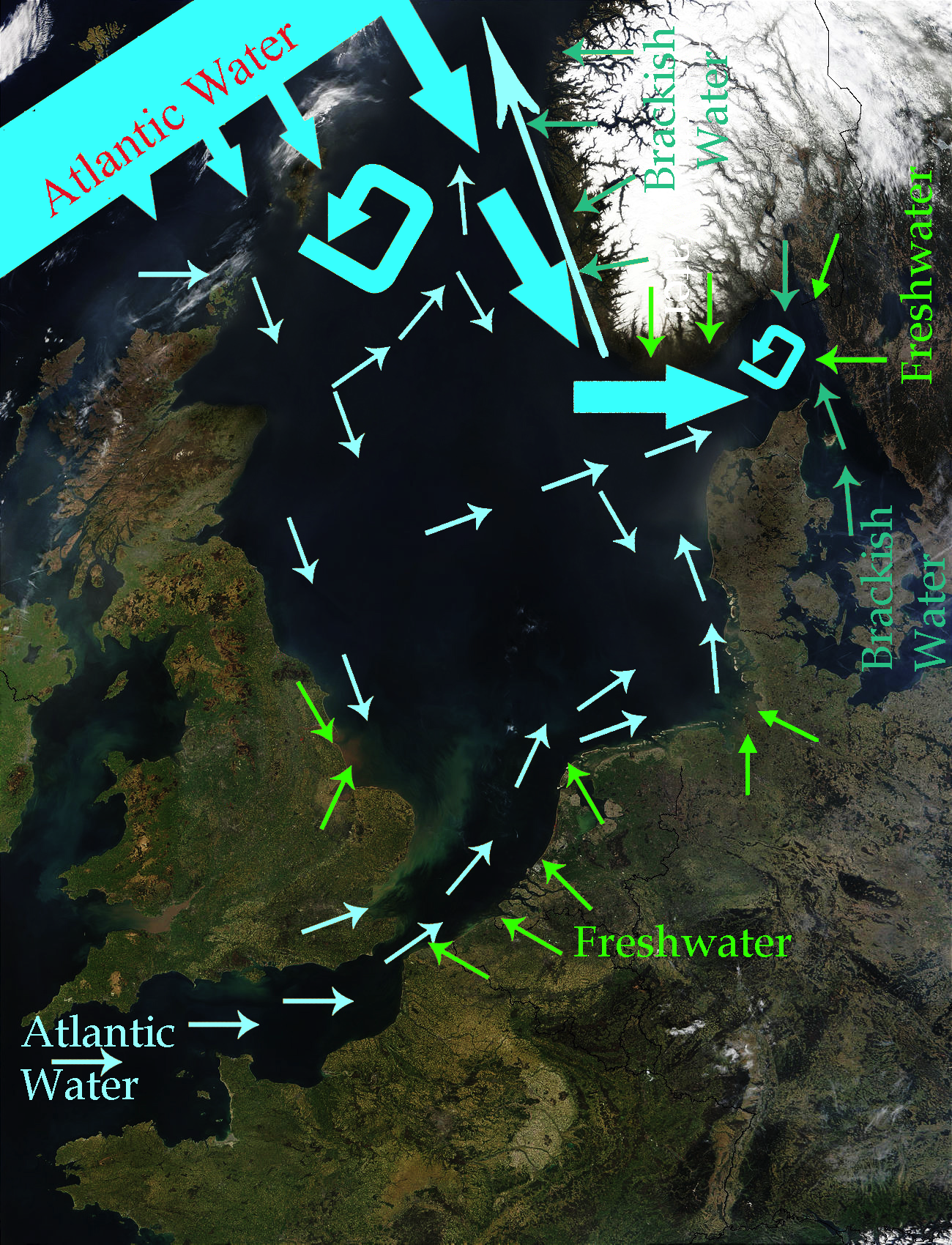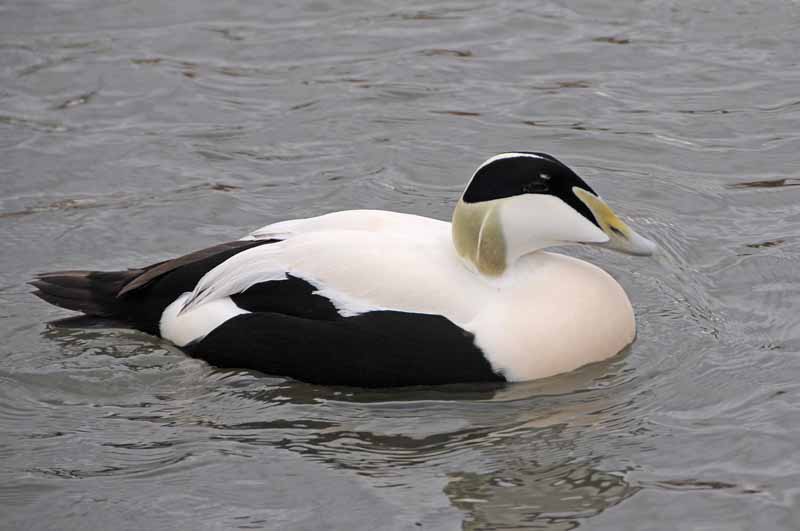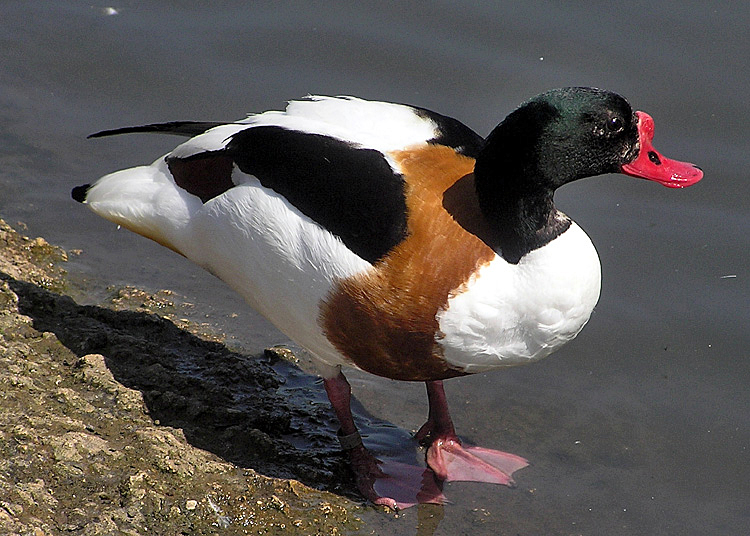|
Hamburg Wadden Sea National Park
The Hamburg Wadden Sea National Park (german: Hamburgisches Wattenmeer) is the smallest of the three German Wadden Sea National Parks which protect the single ecological entity of the Wadden Sea reaching from Den Helder to Esbjerg. It is an exclave of the city state of Hamburg in North Germany and lies 12.5 km off Cuxhaven in the estuary of the Elbe in the North Sea ( German Bight) and includes the islands of Neuwerk, Scharhörn and Nigehörn. It is made up mainly of sand and mixed mudflats with shallow creeks, sand bars (''Plaaten'') and the dune islands. In 2011 the national park was added to the Wadden Sea World Heritage Site, highlighting its intact intertidal ecosystem, importance as a breeding area for many species of birds, and uniquely high biodiversity. National park In accordance with a ruling by the Hamburg Parliament on 9 April 1990 the area was reclassified as the Hamburg Wadden Sea National Park. On 5 April 2001 the law was updated and the national ... [...More Info...] [...Related Items...] OR: [Wikipedia] [Google] [Baidu] |
North Sea
The North Sea lies between Great Britain, Norway, Denmark, Germany, the Netherlands and Belgium. An epeiric sea on the European continental shelf, it connects to the Atlantic Ocean through the English Channel in the south and the Norwegian Sea in the north. It is more than long and wide, covering . It hosts key north European shipping lanes and is a major fishery. The coast is a popular destination for recreation and tourism in bordering countries, and a rich source of energy resources, including wind and wave power. The North Sea has featured prominently in geopolitical and military affairs, particularly in Northern Europe, from the Middle Ages to the modern era. It was also important globally through the power northern Europeans projected worldwide during much of the Middle Ages and into the modern era. The North Sea was the centre of the Vikings' rise. The Hanseatic League, the Dutch Republic, and the British each sought to gain command of the North Sea and access ... [...More Info...] [...Related Items...] OR: [Wikipedia] [Google] [Baidu] |
World Heritage Site
A World Heritage Site is a landmark or area with legal protection by an international convention administered by the United Nations Educational, Scientific and Cultural Organization (UNESCO). World Heritage Sites are designated by UNESCO for having cultural, historical, scientific or other form of significance. The sites are judged to contain "cultural and natural heritage around the world considered to be of outstanding value to humanity". To be selected, a World Heritage Site must be a somehow unique landmark which is geographically and historically identifiable and has special cultural or physical significance. For example, World Heritage Sites might be ancient ruins or historical structures, buildings, cities, deserts, forests, islands, lakes, monuments, mountains, or wilderness areas. A World Heritage Site may signify a remarkable accomplishment of humanity, and serve as evidence of our intellectual history on the planet, or it might be a place of great natural beauty. A ... [...More Info...] [...Related Items...] OR: [Wikipedia] [Google] [Baidu] |
Eider Duck
Eiders () are large seaducks in the genus ''Somateria''. The three extant species all breed in the cooler latitudes of the Northern Hemisphere. The down feathers of eider ducks, and some other ducks and geese, are used to fill pillows and quilts—they have given the name to the type of quilt known as an eiderdown. Taxonomy The genus ''Somateria '' was introduced in 1819 to accommodate the king eider by the English zoologist William Leach in an appendix to John Ross's account of his voyage to look for the Northwest Passage. The name is derived from Ancient Greek : ''sōma'' "body" (stem ''somat-'') and : ''erion'' "wool", referring to eiderdown. Steller's eider (''Polysticta stelleri'') is in a different genus despite its name. Species The genus contains three species. Two undescribed species are known from fossils, one from Middle Oligocene The Oligocene ( ) is a geologic epoch of the Paleogene Period and extends from about 33.9 million to 23 million years ... [...More Info...] [...Related Items...] OR: [Wikipedia] [Google] [Baidu] |
Schleswig-Holstein Wadden Sea National Park
The Schleswig-Holstein Wadden Sea National Park (german: Nationalpark Schleswig-Holsteinisches Wattenmeer) is a national park in the Schleswig-Holstein area of the German Wadden Sea. It was founded by the Parliament of Schleswig-Holstein on 1 October 1985 by the National Park Act of 22 July 1985 and expanded significantly in 1999. Together with the Lower Saxon Wadden Sea National Park, the Hamburg Wadden Sea National Park and those parts of Elbe estuary which are not nature reserves, it forms the German part of the Wadden Sea. The national park extends from the German-Danish maritime border in the north down to the Elbe estuary in the south. In the North Frisian area, it includes the mudflats around the geest-based and marsh islands and the ''Halligen'' (undyked islands). There, the mudflats are 40 km wide in places. Further south lie areas of mudflats which contain particularly large sandbanks. In addition to the plants and animals that are typical of the entire Wadden ... [...More Info...] [...Related Items...] OR: [Wikipedia] [Google] [Baidu] |
Lower Saxony Wadden Sea National Park
The Lower Saxon Wadden Sea National Park (german: Nationalpark Niedersächsisches Wattenmeer) was established in 1986 and embraces the East Frisian Islands, mudflats and salt marshes between the Bay of Dollart on the border with the Netherlands in the west and Cuxhaven as far as the Outer Elbe shipping channel in the east. The national park has an area of about . The National Park organisation is located in Wilhelmshaven. In June 2009, the National Park became a UNESCO World Heritage Site along with the Schleswig-Holstein Wadden Sea and the Dutch Wadden Sea, highlighting its unique intertidal ecosystem and high biodiversity. Ecology The habitats to be protected by this park include the mudflats, salt marshes, beaches, dunes and estuaries on the North Sea. Special attention is given to the wildlife and flora typical of the Wadden Sea of which the park forms a part. The coast of the North Sea is unusually flat. The seabed descends in places only a few centimetres per kilomet ... [...More Info...] [...Related Items...] OR: [Wikipedia] [Google] [Baidu] |
Moulting
In biology, moulting (British English), or molting (American English), also known as sloughing, shedding, or in many invertebrates, ecdysis, is the manner in which an animal routinely casts off a part of its body (often, but not always, an outer layer or covering), either at specific times of the year, or at specific points in its life cycle. In medieval times it was also known as "mewing" (from the French verb "muer", to moult), a term that lives on in the name of Britain's Royal Mews where the King's hawks used to be kept during moulting time before becoming horse stables after Tudor times. Moulting can involve shedding the epidermis (skin), pelage ( hair, feathers, fur, wool), or other external layer. In some groups, other body parts may be shed, for example, the entire exoskeleton in arthropods, including the wings in some insects. Examples In birds In birds, moulting is the periodic replacement of feathers by shedding old feathers while producing new ones. Feather ... [...More Info...] [...Related Items...] OR: [Wikipedia] [Google] [Baidu] |
Shelduck
The shelducks, most species of which are found in the genus ''Tadorna'' (except for the Radjah shelduck, which is now found in its own monotypic genus ''Radjah''), are a group of large birds in the Tadorninae subfamily of the Anatidae, the biological family that includes the ducks and most duck-like waterfowl such as the geese and swans. Biology Shelducks are a group of large, often semi-terrestrial waterfowl, which can be seen as intermediate between geese (''Anserinae'') and ducks. They are mid-sized (some 50–60 cm) Old World waterfowl. The sexes are colored slightly differently in most species, and all have a characteristic upperwing coloration in flight: the tertiary remiges form a green speculum, the secondaries and primaries are black, and the coverts (forewing) are white. Their diet consists of small shore animals ( winkles, crabs etc.) as well as grasses and other plants. They were originally known as "sheldrakes", which remained the most common name until the la ... [...More Info...] [...Related Items...] OR: [Wikipedia] [Google] [Baidu] |
Gray Seal
The grey seal (''Halichoerus grypus'') is found on both shores of the North Atlantic Ocean. In Latin Halichoerus grypus means "hook-nosed sea pig". It is a large seal of the family Phocidae, which are commonly referred to as "true seals" or "earless seals". It is the only species classified in the genus ''Halichoerus''. Its name is spelled gray seal in the US; it is also known as Atlantic seal and the horsehead seal. Taxonomy There are two recognized subspecies of this seal: The type specimen of ''H. g. grypus'' ( Zoological Museum of Copenhagen specimen ZMUC M11-1525, caught off the island of Amager, Danish part of the Baltic Sea) was believed lost for many years but was rediscovered in 2016, and a DNA test showed it belonged to a Baltic Sea specimen rather than from Greenland, as had previously been assumed (because it was first described in Otto Fabricius' book on the animals in Greenland: ''Fauna Groenlandica''). The name ''H. g. grypus'' was therefore transferred to th ... [...More Info...] [...Related Items...] OR: [Wikipedia] [Google] [Baidu] |
Common Seal
The harbor (or harbour) seal (''Phoca vitulina''), also known as the common seal, is a true seal found along temperate and Arctic marine coastlines of the Northern Hemisphere. The most widely distributed species of pinniped (walruses, eared seals, and true seals), they are found in coastal waters of the northern Atlantic, Pacific Oceans, Baltic and North Seas. Harbor seals are brown, silvery white, tan, or gray, with distinctive V-shaped nostrils. An adult can attain a length of 1.85 m (6.1 ft) and a mass of up to . Blubber under the seal's skin helps to maintain body temperature. Females outlive males (30–35 years versus 20–25 years). Harbor seals stick to familiar resting spots or haulout sites, generally rocky areas (although ice, sand, and mud may also be used) where they are protected from adverse weather conditions and predation, near a foraging area. Males may fight over mates under water and on land. Females bear a single pup after a nine-month gestation, w ... [...More Info...] [...Related Items...] OR: [Wikipedia] [Google] [Baidu] |
Salt Marsh
A salt marsh or saltmarsh, also known as a coastal salt marsh or a tidal marsh, is a coastal ecosystem in the upper coastal intertidal zone between land and open saltwater or brackish water that is regularly flooded by the tides. It is dominated by dense stands of salt-tolerant plants such as herbs, grasses, or low shrubs. These plants are terrestrial in origin and are essential to the stability of the salt marsh in trapping and binding sediments. Salt marshes play a large role in the aquatic food web and the delivery of nutrients to coastal waters. They also support terrestrial animals and provide coastal protection. Salt marshes have historically been endangered by poorly implemented coastal management practices, with land reclaimed for human uses or polluted by upstream agriculture or other industrial coastal uses. Additionally, sea level rise caused by climate change is endangering other marshes, through erosion and submersion of otherwise tidal marshes. However, r ... [...More Info...] [...Related Items...] OR: [Wikipedia] [Google] [Baidu] |
Endemic
Endemism is the state of a species being found in a single defined geographic location, such as an island, state, nation, country or other defined zone; organisms that are indigenous to a place are not endemic to it if they are also found elsewhere. For example, the Cape sugarbird is found exclusively in southwestern South Africa and is therefore said to be ''endemic'' to that particular part of the world. An endemic species can be also be referred to as an ''endemism'' or in scientific literature as an ''endemite''. For example ''Cytisus aeolicus'' is an endemite of the Italian flora. ''Adzharia renschi'' was once believed to be an endemite of the Caucasus, but it was later discovered to be a non-indigenous species from South America belonging to a different genus. The extreme opposite of an endemic species is one with a cosmopolitan distribution, having a global or widespread range. A rare alternative term for a species that is endemic is "precinctive", which applies to ... [...More Info...] [...Related Items...] OR: [Wikipedia] [Google] [Baidu] |
Carriage
A carriage is a private four-wheeled vehicle for people and is most commonly horse-drawn. Second-hand private carriages were common public transport, the equivalent of modern cars used as taxis. Carriage suspensions are by leather strapping and, on those made in recent centuries, steel springs. Two-wheeled carriages are informal and usually owner-driven. Coaches are a special category within carriages. They are carriages with four corner posts and a fixed roof. Two-wheeled war chariots and transport vehicles such as four-wheeled wagons and two-wheeled carts were forerunners of carriages. In the twenty-first century, horse-drawn carriages are occasionally used for public parades by royalty and for traditional formal ceremonies. Simplified modern versions are made for tourist transport in warm countries and for those cities where tourists expect open horse-drawn carriages to be provided. Simple metal sporting versions are still made for the sport known as competitive drivi ... [...More Info...] [...Related Items...] OR: [Wikipedia] [Google] [Baidu] |








.jpg)
